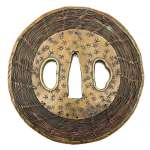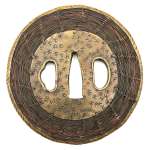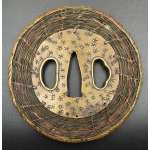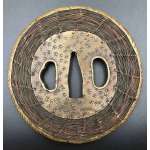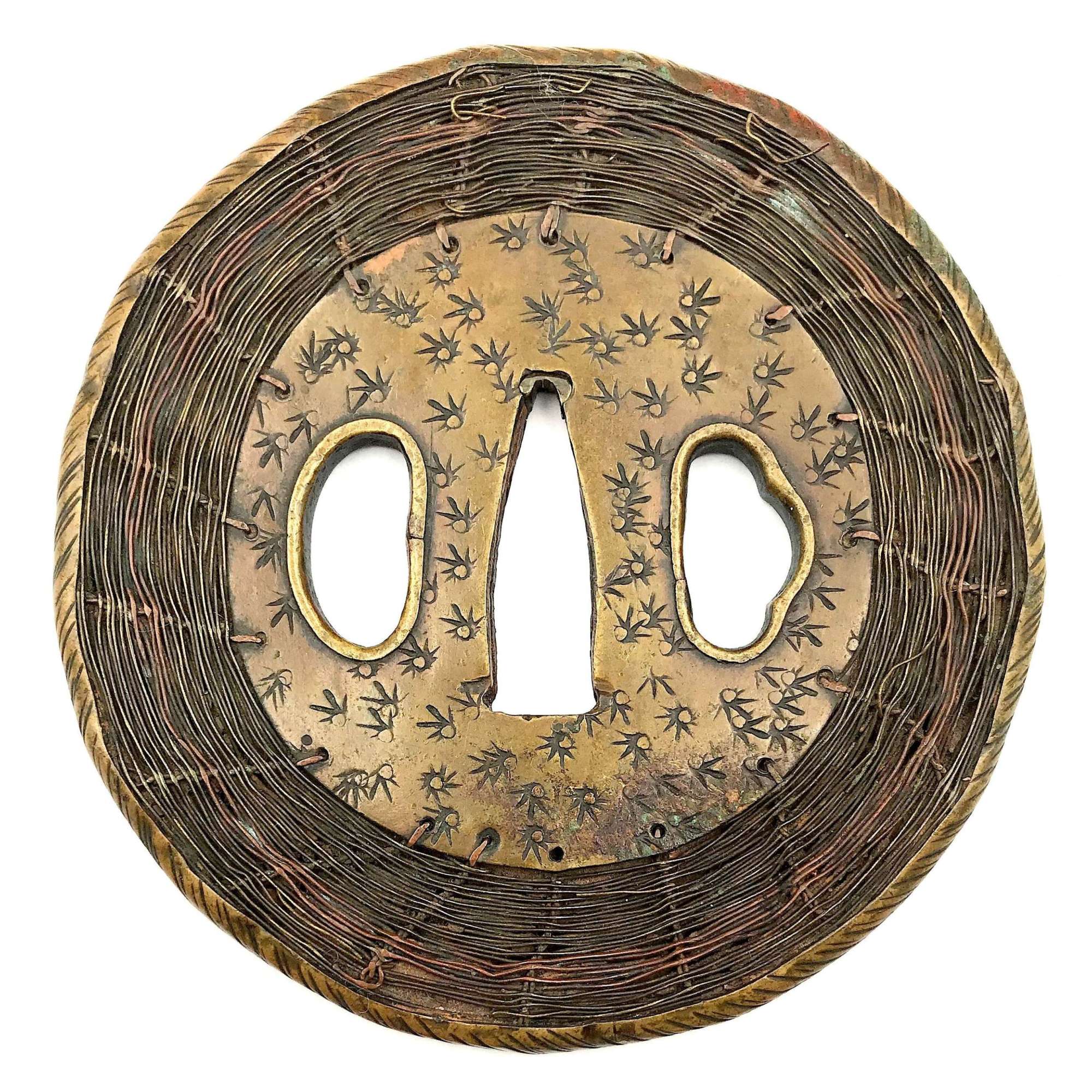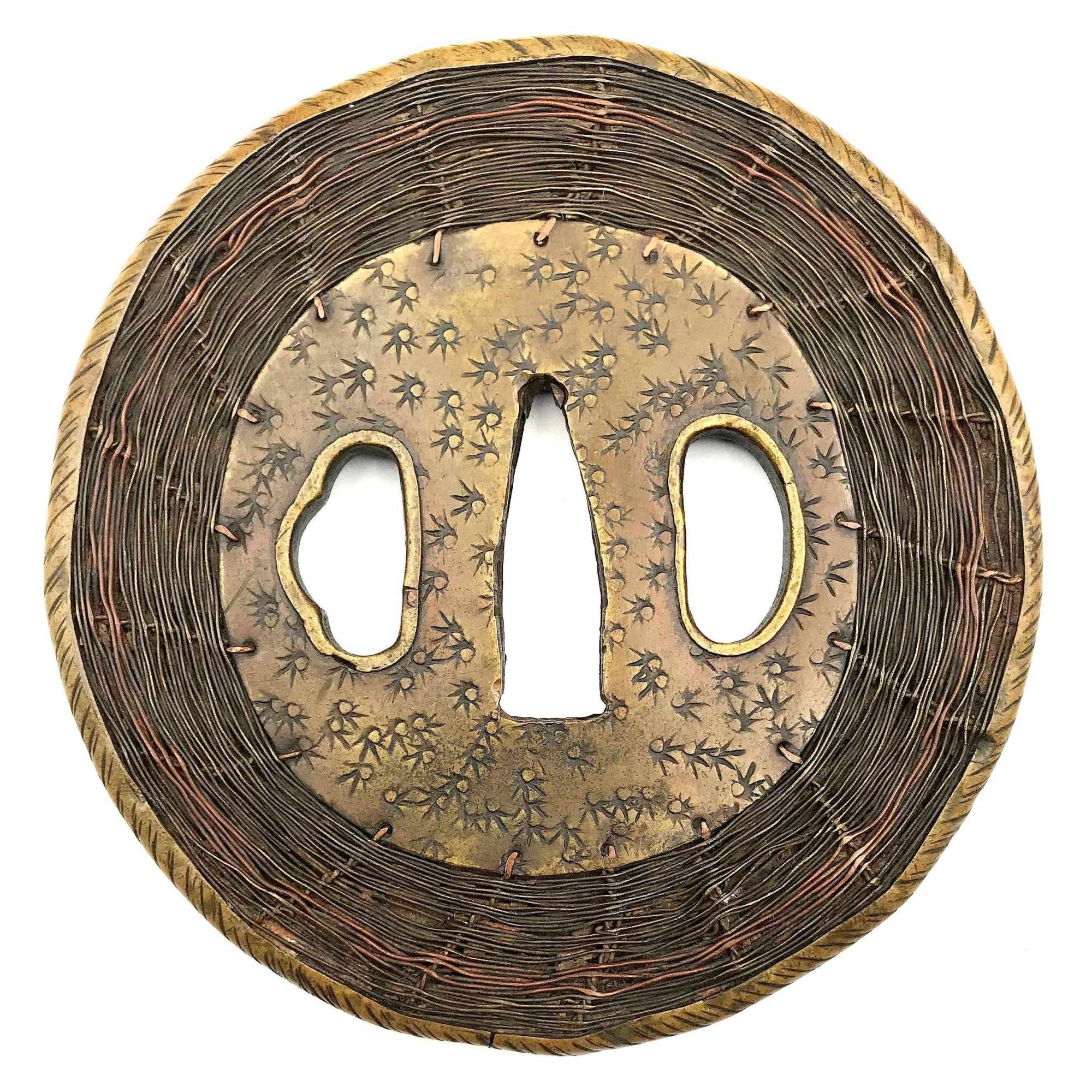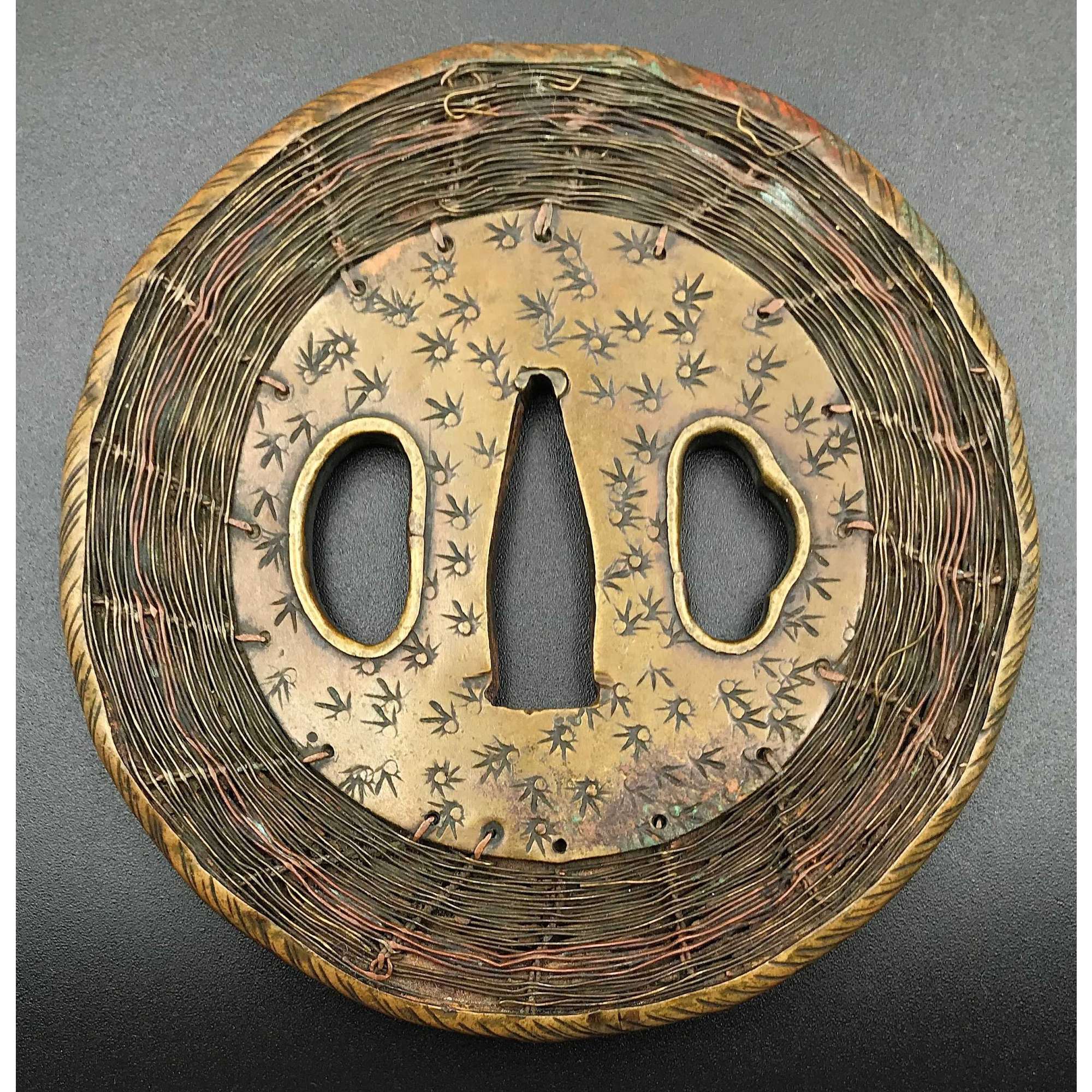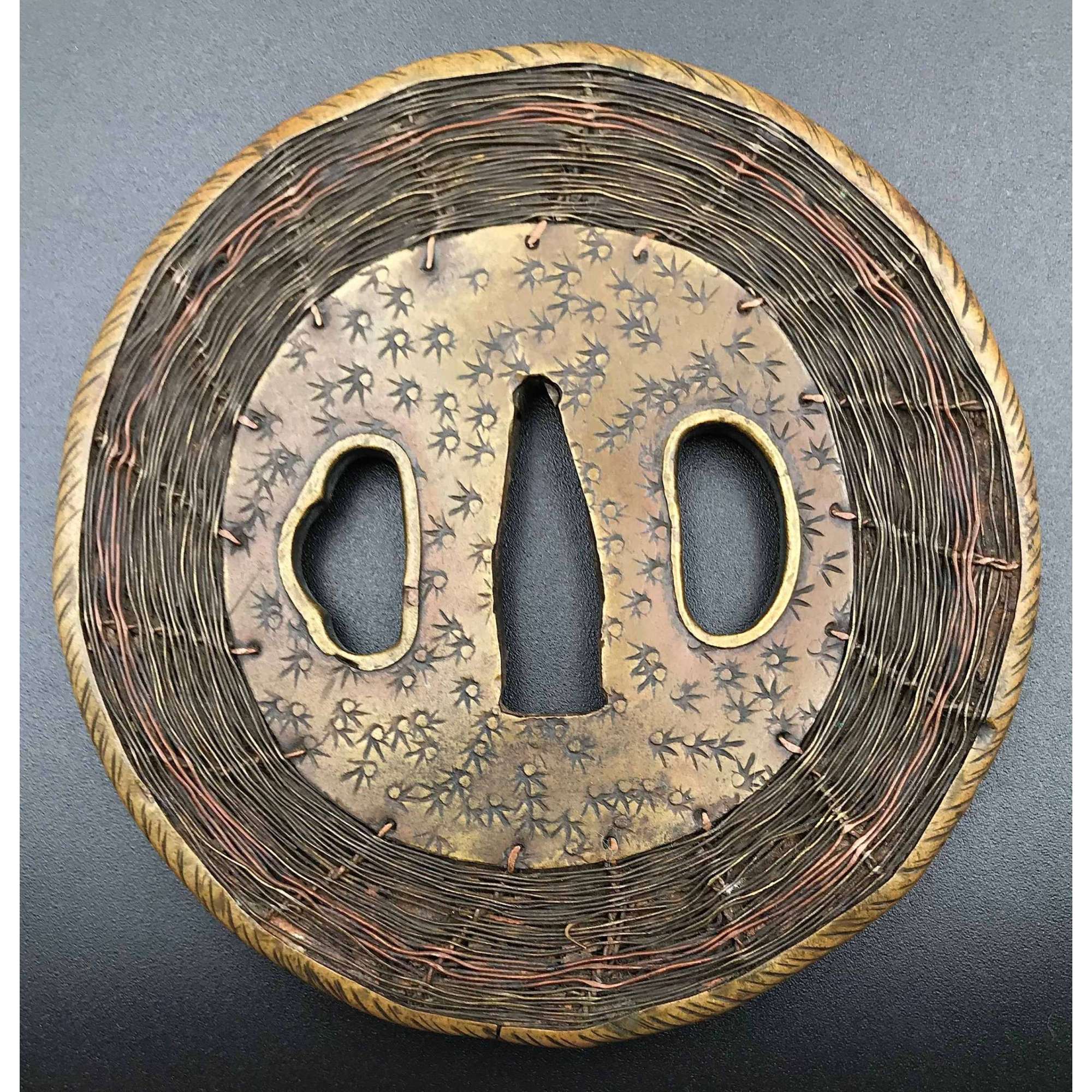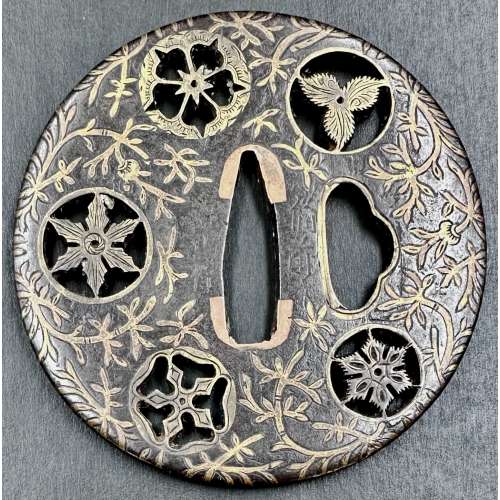Shingen school (or style) tsuba of round form with iron core and web, covered with a thin brass plate decorated with star-shaped punch marks. The rim of tsuba is a brass nawame-fukurin. Between the central brass plate and the rim there is woven wire of brass and copper in a basketweave pattern. Both hitsu-ana have raised rim. Traces of oxidation.
Unsigned.
Edo period, 18th century.
Size: Height: 88.4 mm, Width: 86.6 mm, Thickness at seppa-dai: 4.6 mm. Weight: 132.4 g.
Robert E. Haynes in his “Study Collection of Japanese Sword Fittings. Nihon Art Publishers, 2010” on p. 117 says: “Brass outer plate of round shape. This tsuba has an iron core tsuba of spoke form as made by Saotome school, ca. 1500. There are brass plates on either side connected to the rim by woven brass and shakudō wire. The wire has been hand drawn, which is very difficult. The hitsuana are brass lined and the rim has a brass cover. This type of tsuba is referred to as a Shingen tsuba. This is a reference to Takeda Shingen Harunobu (1521-1573), the great and famous daimyō.”
For reference see the MFA collection.
A look-a-like tsuba is illustrated in Compton Collection, vol. 2, p. 26-27, №52:
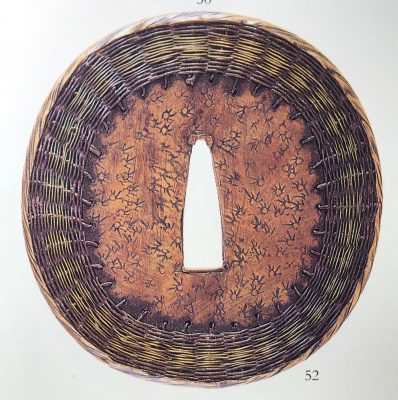
Compton Collection, vol. 2, p. 26-27, №52.
More details and examples can be found at: http://varshavskycollection.com/shingen-tsuba/


